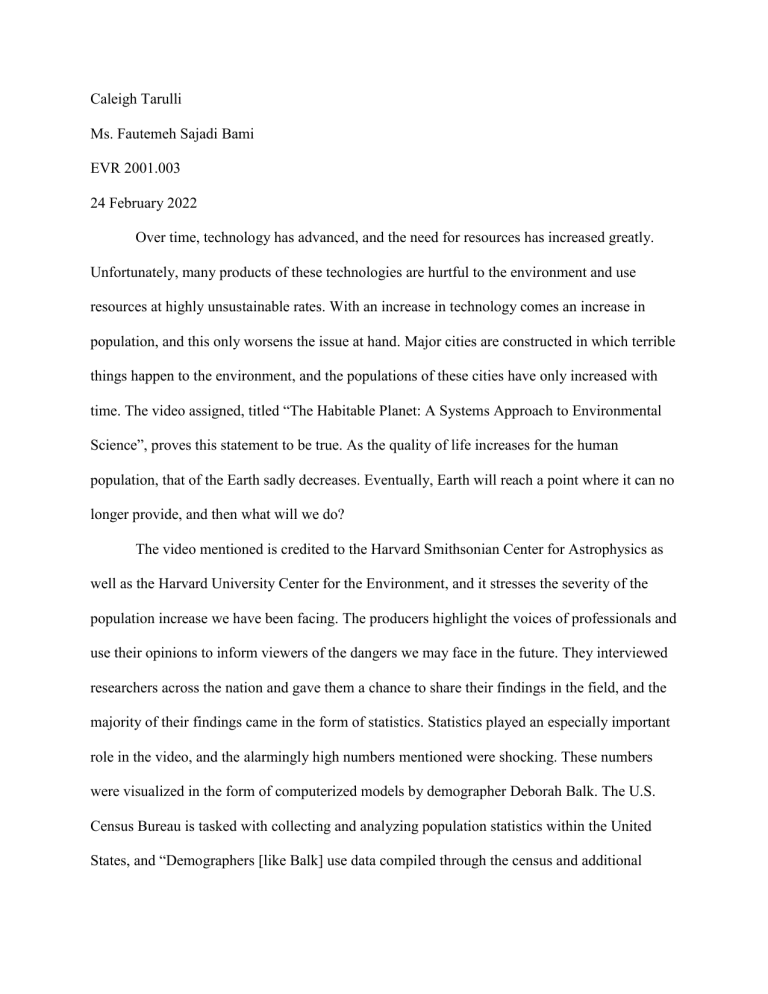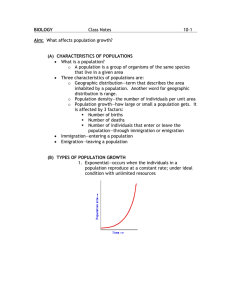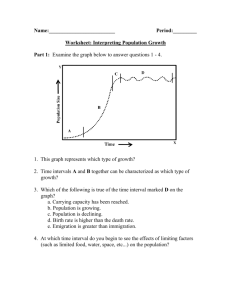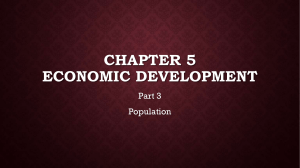
Caleigh Tarulli Ms. Fautemeh Sajadi Bami EVR 2001.003 24 February 2022 Over time, technology has advanced, and the need for resources has increased greatly. Unfortunately, many products of these technologies are hurtful to the environment and use resources at highly unsustainable rates. With an increase in technology comes an increase in population, and this only worsens the issue at hand. Major cities are constructed in which terrible things happen to the environment, and the populations of these cities have only increased with time. The video assigned, titled “The Habitable Planet: A Systems Approach to Environmental Science”, proves this statement to be true. As the quality of life increases for the human population, that of the Earth sadly decreases. Eventually, Earth will reach a point where it can no longer provide, and then what will we do? The video mentioned is credited to the Harvard Smithsonian Center for Astrophysics as well as the Harvard University Center for the Environment, and it stresses the severity of the population increase we have been facing. The producers highlight the voices of professionals and use their opinions to inform viewers of the dangers we may face in the future. They interviewed researchers across the nation and gave them a chance to share their findings in the field, and the majority of their findings came in the form of statistics. Statistics played an especially important role in the video, and the alarmingly high numbers mentioned were shocking. These numbers were visualized in the form of computerized models by demographer Deborah Balk. The U.S. Census Bureau is tasked with collecting and analyzing population statistics within the United States, and “Demographers [like Balk] use data compiled through the census and additional surveys to study population dynamics” (Griswold & Schneps, 2007). The bureau’s former director, Martha Farnsworth Riche, was interviewed as she showed her understanding of the effect that population growth has on the environment. As of right now, the environment is headed in an overall negative direction, and it has a lot to do with population growth. To understand the population of an area, researchers like Riche and Balk must take multiple factors into account. The increase or decrease of a population over time depends on the many changes the area may undergo, yet some changes have more of an impact than others. The death rate of a population tells us how many have died out of the total number of people living before the time recorded, and these numbers have been decreasing over time. Riche shares that “…the primary driver of our population growth is that we aren’t dying as young as we used to”, and by this, she means that there has been an increase in life expectancy (Griswold & Schneps, 2007). The term “life expectancy” is used to represent the average age people tend to die at, and the number keeps increasing as modern medicine advances. When taking the living part of a population into account, immigration and emigration are important to consider. Some will move to an area (immigration), while others will move from an area (emigration). Balk has proven that immigration to coastal areas will become an issue as the sea level rises in accordance with global warming. She explains that the most population growth occurs within cities, and that “many of these cities are situated in low-lying coastal areas—areas most at risk for climate change effects” (Griswold & Schneps, 2007). Death rates, immigration, emigration, as well as birth rates, can be formulated to tell us about the overall change in the population of an area. The formula is as follows (Wright & Boorse, 2016): (BIRTH RATE + IMMIGRATION) – (DEATH RATE + EMIGRATION) = CHANGE IN POPULATION As previously mentioned, growing coastal cities are at risk. As expected though, they have themselves to blame. When the population of a city increases, so does the amount of resources exploited and human waste discarded. According to Riche, “In the semi-arid or arid southwest, we have people using water at unsustainable rates” (Griswold & Schneps, 2007). Water is used for many important reasons: drinking, bathing, cooking, and even generating electricity. However, it’s often used for quite unnecessary purposes like swimming pools and fountains. The exploitation of this resource can be found almost anywhere, and so can the improper disposal of waste. Cape Cod, Massachusetts, has seen a significant rise in population, and environmental engineer Brian Dudley explains that because of this rise, “There has been an increase in the amount of wastewater that is being generated and, as a result, an increase in the amount of nitrogen” (Griswold & Schneps, 2007). An excessive amount of nitrogen can lead to the dying of plants, and therefore habitat loss. Nitrogen is not the only gas to affect the environment, though. Greenhouse gases, which mainly come from the burning of fossil fuels for transportation, absorb radiation from the earth’s surface and cause our atmosphere to warm. Ice starts to melt which causes a rise in sea levels, and the massive coastal cities that burn these fossil fuels are then flooded. With all of this destruction happening, it’s clear to see that Earth has already reached its carrying capacity. If its carrying capacity had not yet been reached, the Earth would not be suffering like it already is. According to logistic growth, overpopulation can either lead to the exhaustion of resources and death, or the population can balance itself out (Wright & Boorse, 2016). With how unmerciful people have proven to be, I do not think that it will balance. I believe that humans will use and use, until the planet reaches its breaking point. We, as the inhabitants of Earth, have the responsibility of taking care of the planet. Mindfulness of our use of resources should be valued, as well as the cleanliness of our environment. In a sense, our existence depends on our existence. If we want to continue to exist here on Earth, we must change our ways of living. References Griswold, A. (Producer), & Schneps, M.H. (Director). (2007). The Habitable Planet: A Systems Approach to Environmental Science. Annenberg Learner. https://www.learner.org/series/the-habitable-planet-a-systems-approach-toenvironmental-science/human-population-dynamics/human-population-dynamics-video/ Wright, R.T. & Boorse, D.F. (2016). Environmental Science: Toward a Sustainable Future. Pearson. 74-75.




